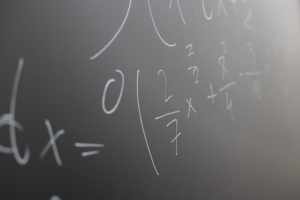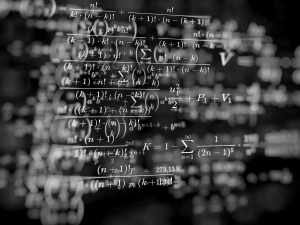An empirical rule calculator is a powerful tool for determining the normal distribution of data over three standard deviation ranges. People also call this calculator the three-sigma calculator or the 95, 68, and 99.7 rule calculator.
To retrieve the mean values for 68 percent, 95 percent, and 99.7 percent of data within 3 SD ranges, enter the mean and standard deviation if you’re working with summary data or the sample or population if you’re working with raw data.
The empirical rule statistics calculator uses 68 95 99 rule statistics as its foundation. So, read on to learn about the concept of the practical rule, its formula, and an illustration of how to utilize an empirical calculator and the empirical rule.
Table of Contents
The Empirical Rule
In the empirical law, the three-sigma rule, also known as the 68-95-99.7 rule, is a statistical rule that says that with normally distributed data, almost all of the data will lay within three standard deviations on either side mean. You’ll find the following information:
- The data is 95 percent within two standard deviations.
- In 68 percent of the cases, the data is within one standard deviation.
- 7% of data fall within three standard deviations.
Let’s go over some of the terms used in this concept.
- The traditional deviation is a spread measurement that indicates how far the data deviates from the average or how varied the dataset is. The smaller the value, the more restricted the data range.
- A normal distribution is symmetric about the mean, with data close to the mean occurring more usually than data farther from the mean.

The Formula Of The Empirical Rule Calculator
Individuals will also learn about the formula from the supplied procedure; AN empirical formula calculator uses the same formula to determine the normal distribution of data within three standard deviation bands.
Find the mean using the formula: μ = (Σ xi) / n
Where:
- ∑ denotes the total of all specified values.
- xi stands for each of the data’s values
- N stands for the total no. of the terms
Calculate the mean deviation by using formula: σ = √ (∑ (xi – µ) ² / (n – 1))
The formula for the empirical rule is the following:
- You must keep 68 percent data inside one standard deviation of the mean, which means the data must fall between μ – σ and μ + σ.
- Ninety-five percent of data falls between μ – 2σ and μ + 2σ and is kept inside 2 traditional deviations from the norm.
- The data is 99.7% within three standard deviations of the mean that is between μ – 3σ and μ + 3σ.
To get the intervals, all users have to enter the mean and standard deviation numbers to calculate the empirical rule.
The Bell Curve
The phrase “bell curve” commonly expresses the mathematical concept of regular distribution, also called Gaussian distribution. The “bell curve,” also called the “bell shape,” is generated when you plot a line using points in data for an object that fulfills the standard distribution requirements.
The center has the maximum number of values and is the line’s highest point when it comes to bell curves. This point is the mean, but in simple terms, it is the element with the most occurrences (the mode, in this case).

The Normal Distribution
The most important thing about a normal distribution is that the curve is in the middle and decreases on both sides. Compared to other distributions, normal distributions have a lower potential to create abnormally extreme values, known as outliers. The bell curve also indicated that the data is symmetrical.
Remember that the empirical rule arose from statisticians repeatedly seeing the same form of distribution curves. A normal distribution practical rule calculator follows the 68 95 99.7 or three-sigma rule. In a normal distribution, almost all data fall within three standard deviations of the mean – the mean, mode, and median all have the same value.
- The average of all the numbers in the data set is the mean.
- The mode is the number that appears the most often in the data collection.
- The median is the difference between the data set’s highest and lowest integers.
The dataset’s mean, mode, and median should all be in the middle. The data set should also have half of the data at the top, and the other half should be at the bottom.
The mean and standard deviation are the two components of a bell shape graph. The mean determines the position of the center, whereas the traditional deviation specifies the bell’s width and height. For instance, a significant standard deviation produces a short and wide bell form, whereas a slight standard deviation produces a narrow and tall curve shape.
About The Calculator For Empirical Rules
The empirical rule calculator with a graph helps determine whether any given data set follows a normal distribution. They do it by determining whether 68 percent of data falls inside the first standard deviation (σ), 95 percent of data falls inside the second standard deviation (σ), and 99.7 percent of data falls within the first three standard deviations (σ). Empirical rule statistics also include standard deviation, normal distribution, and mean. The entire calculation depends on the applicable standard distribution rule.
What Is The Procedure For Using The Empirical Rule Calculator?
An empirical rule formula calculator has two options: input and outcomes. The computation form has two options in the input section, the first is summary data, and the second is raw data. Go with the first choice (summary data) if you know the calculated mean and standard deviation.
Also, select the second option if you haven’t calculated the mean and standard deviation for your data (raw data). When working with raw data, you simply choose the sample or population from a drop-down menu and enter the figures. This program will also calculate the mean, standard deviation, and percentages of distributions automatically using the statistical, empirical rule.
Example:
Assume that 100 students’ pulse rates are bell-shaped, with a mean of 75 and a standard deviation of 4.
- Around 68% of men have pulse rates in the 75 土 1(4) = [71, 79] range.
- Approximately 95% of men had pulse rates in the 75 土 2(4) = [67, 83] range.
- Approximately 99.7% of men had pulse rates in the range 75 土 3(4) = [63, 87].

To Obtain A Normal Distribution For Summary Data
Users must choose the ‘summary data’ option if they have summary data. Users will also have the mean and standard deviation for their data in this scenario. Check the data distribution by following the easy procedures below.
Input
- Simply select the summary data from the “calculation form.”
- Now enter the data’s mean value.
- You must document the mean deviation next.
- Simply press the calculate button.
Output:
- Your entered mean will be the first output. It will remain unchanged and will be represented by (x̅).
- Your standard deviation value will be available as a second output (s)
- Values will also be reported for 68 percent of data falls between the first standard deviation.
- For 95 percent of data falls between the second standard deviation, values will be notified.
- Values will be reported for 99.7% of data falls between the third standard deviation.
- This bell-shaped distribution calculator also displays the full bell-shaped empirical rule graph.
To Compute A Normal Distribution For Raw Data:
Users must choose the raw data option from the drop-down menu if one’s data is in sample or population. The calculator will handle the rest.
Input:
- Simply select the raw data from the “calculation form.”
- The initial information is dataset type, and you must choose the population or sample.
- Now, according to the data, insert numbers.
- Select the Calculate option.
Output:
- User mean, denoted by (x̅), will be the first output.
- User standard deviation value will be represented by (s)
- Values will be reported for 68 percent of data falls between the first standard deviation.
- It will notify the values if 95 percent of data falls between the second standard deviation.
- Values will also be reported for 99.7% of data falls between the third standard deviation.
- The bell-shaped empirical rule relating to practical rule statistics will be present on this 68-95-99 calculator.
When Should The Empirical Rule Be Applied?
- The empirical rule is frequently used in empirical research to calculate the probability of a specific piece of data occurring. The empirical rule formula or calculator can help anticipate the most likely outcomes when all data is unavailable.
- One can acquire a comprehensive grasp of a population’s features without having to test everyone, and this can also help to evaluate whether a data set is regularly distributed or not.
- You can also utilize the algorithm to identify outliers (results that differ considerably from others), which experimental errors can cause.
- In statistics, people typically use the Empirical Rule for predicting, especially when obtaining correct findings or data is difficult or impossible.
The Chebyshev Rule
The Empirical Rule calculator is a calculation that you can only utilize to distribute data, whereas Chebyshev’s Theorem is a rule that you can regularly apply to any data collection. It is the percentage of measurements that lie within one, two, or more standard deviations of the mean that is the smallest.
The Chebyshev Theorem And The Empirical Rule Are Related:
The Empirical Rule calculator in the statistic is a prediction that you can only apply to data sets with a bell-shaped relative frequency histogram. Using the empirical rule formula calculates the percentage of measurements that fall between 1 and 3 standard deviations of the mean. On the other hand, you can apply Chebyshev’s Theorem to any data collection, even if you do not regularly distribute it. It refers to the smallest amount of data that falls within one, two, or three standard deviations of the mean.

The Empirical Rule Calculation: Notation!
- You must always meet the following conditions while using the Empirical Rule Formula: The data is about 68 percent within one standard deviation of the mean (or between the mean – one standard deviation and the mean + one standard deviation). You can represent the previous statement mathematically as μ ± 1σ.
- The second requirement is that 95% of the data falls inside two standard deviations of the mean (or the mean – 2 times the standard deviation and the mean + 2 times the traditional deviation). You can express it numerically as μ ± 2σ
- And about 99.7% of the data falls inside three standard deviations of the mean (or the traditional deviation – three times the mean, and the traditional deviation + three times the mean). μ ± 3σ is also a mathematical representation. It is the notation that the Empirical rule calculator uses technically.
Final thoughts
The empirical rule is a concept related to statistics that helps indicate the likelihood of observations and is especially effective when approximating a large population. It’s crucial to remember that these are only estimations. Outliers who do not fit into the distribution are always a possibility. As a result, the results are unreliable, and one should proceed with caution when acting on the forecast.




























